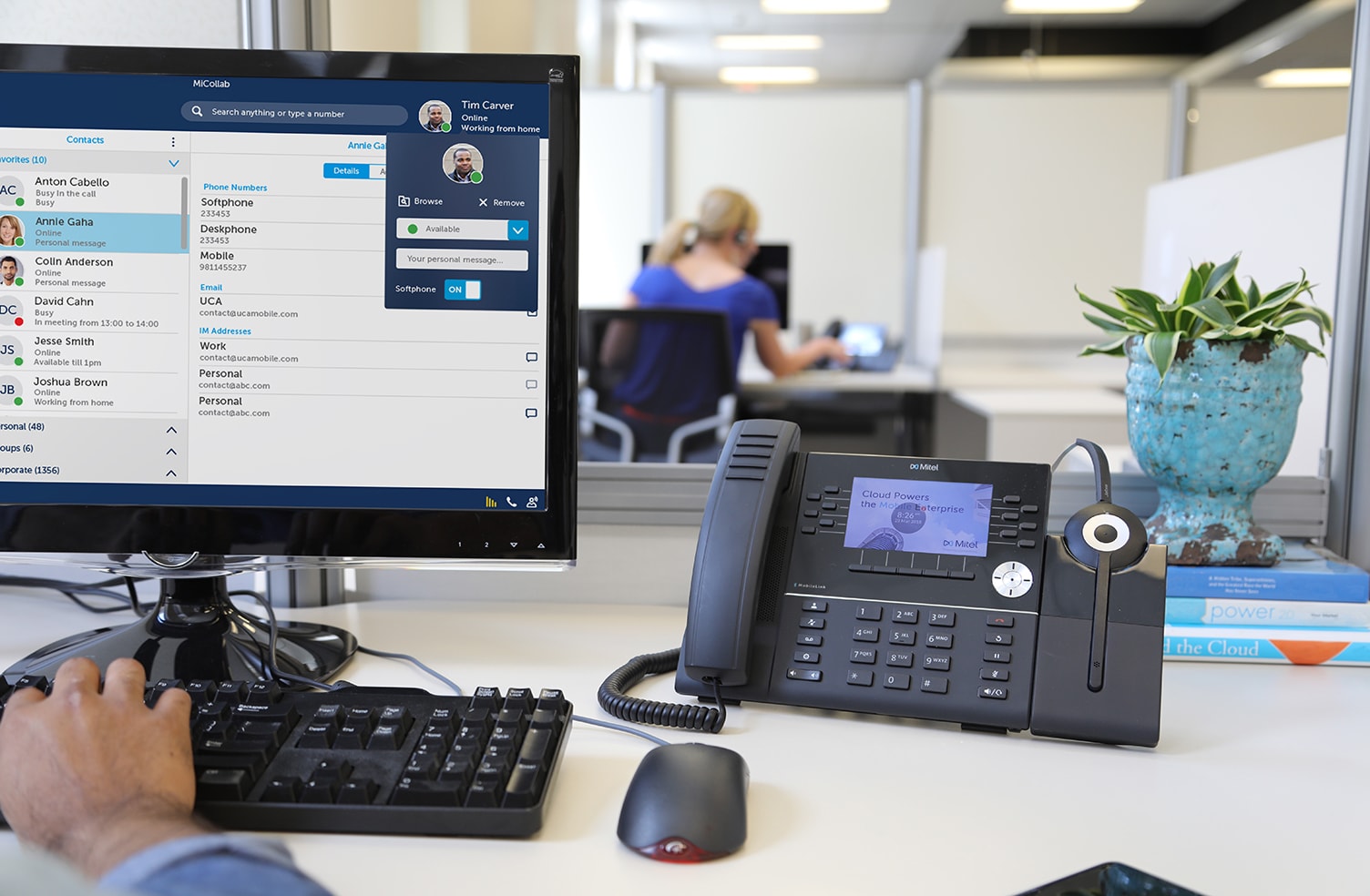
Let’s face it, the days of running a business with outdated communication tools are over. Today, many organizations are taking stock of their communications infrastructure to determine what they will need to support a hybrid working model and remain competitive. Although a migration to cloud-based options could be the eventual goal, getting there may not require an immediate and abrupt shift. Staying agile and competitive on the road to the cloud can be achieved by ensuring existing technology is current.
You can’t get ahead if you’re technically behind
Way back when, you only had to worry about one communication tool. A phone system and access to dial tone was all you needed to support most business operations. That basic hardware could stay in place for years without much upkeep.
Now, your employees need more than a handset to stay connected with colleagues, partners and customers. Smartphones, email, text, chat, screen-sharing, unified communication and more enable a mobile, agile and responsive workforce. The IP-based systems and platforms you rely on to deliver these tools provide a variety of communication and collaboration options. But unlike the basic handsets of yesteryear, the technologies behind today’s systems continue to evolve at a rapid pace. Every minor software update or major upgrade refines existing capabilities or adds new features designed to streamline work processes and improve efficiency.
Unfortunately, many organizations have not kept up with the pace of change. Delayed updates and upgrades and continuing to operate with outdated systems means you are not giving your employees the advanced tools they need to maximize productivity. This puts your employees at a disadvantage compared to competitors who are leveraging every new iteration of their communications systems to ensure that vital link between employees, partners and customers is optimized at every touch point.
Outdated systems are vulnerable
Beyond efficiency and productivity, staying current with updates and upgrades to your existing communication system is the key to protecting yourself from security threats.
Because of the way work is conducted today with dispersed and remote employees, even daily office emails and phone calls can contain confidential information that matters to your customers. The tight integration of voice, data, and image capabilities in IP-based communications systems that enable a distributed workforce make those systems an ideal target for cybercriminals looking for a backdoor into your business data. Most IT professionals agree that outdated software on these systems is an open invitation. So, the longer the software has been neglected, the more likely it is that someone can find a way to exploit its vulnerabilities.
Given that your communication system is the vital enabler to your organization, you can’t afford to take the risk. Avoid the financial cost and disruption of a security breach by keeping your system current with all the latest security features. System software updates and upgrades often address security flaws, eliminate minor glitches or close security holes that could be exploited by hackers. They provide that extra layer of protection your business needs from the damage and destruction caused by a cyberattack. Without that extra layer of protection, you’re opening the door to a potential breach and the resulting loss of consumer confidence, which means that existing customers and potential customers won’t be likely to trust your business in the future.
A move to the cloud should be at your own pace
Of course, as technology evolves, your communications strategy should too. While the objective for all organizations should be an eventual migration to the cloud, that move should be made when it makes the most business sense. By staying current with your existing system, you can be more strategic with your move and make it at your own pace.
When you start thinking about your move to cloud-based communications services, consider whether you have maximized the potential of your current system. Cloud systems can be configured to provide telephony, mobility, team and video collaboration, contact center capabilities and communication integration — all for a monthly fee. Many systems, like Mitel MiVoice Business, can be upgraded with all these features. Upgrading optimizes your current investment and extends the life of your system while you structure your move to the cloud to fit your needs and market strategies.
To capitalize on this potential, make sure you’re making the incremental choices today that keep your system as flexible as possible, ready to add functionality as needed and capture opportunities when they arise. This means staying current with all the latest updates and upgrades and activating features that extend the life of your system, like video, collaboration and customer experience capabilities. It also means thinking strategically with your technology partner about how emerging technologies and creative uses of integrations can revolutionize the workflows in your organization to improve daily operations.
Staying current JUST makes sense
Ultimately, the risks associated with not making needed updates to systems are too great to ignore and the benefits are well worth the effort. But many organizations today are operating with communication systems that are at least one full software version behind current. As a result, their systems may lack the built-in functionality that, if current, could enhance efficiency and increase productivity. These systems are also missing critical security updates that could reduce the risk of cyberattacks.
As you look to define the communications tools you will need to stay competitive during and after the pandemic, it’s important to remember that, sometimes, staying competitive can be as simple as updating what you already have. And if what you already have is Mitel MiVoice Business, you have a solid foundation to build on, as long as you stay current.
This post was originally published on mitel.com.

 800.860.0300
800.860.0300  800.860.0300
800.860.0300 







